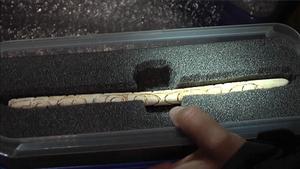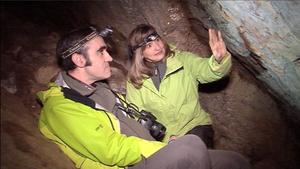A Palaeolithic treasure in a cave of Gipuzkoa
2014/11/05 Galarraga Aiestaran, Ana - Elhuyar Zientzia

The Ezkuzta cave was discovered in the last century and excavations began two years ago. Prehistoric instruments appeared when a wall fell.
According to Iriarte, in addition to the stone industry, the utensils made with bones and branches that have attracted the attention of researchers were also exhibited. According to them, they are “masterpieces” of the Palaeolithic.
Researchers have highlighted two rods with deer branches. They are 14.500 years ago, of the Magdalenian Media and are decorated with engraved lines, one of them almost complete, lacking 2-3 cm and the other totally. According to Arrizabalaga, less than 200 rods of this type have appeared worldwide, more than half in the cave of Isturitz (Baja Navarra). In addition to the first found in Gipuzkoa, very few specimens have been found on the peninsula and most have been broken. This simplicity highlights the importance of discovery.
Iriarte praised the parallelism and perfection of the engraving lines. Researchers do not know their use, but they believe they had a symbolic function.
In addition to the rods, other objects have been found that could be decorated in the site, such as seashells, and a stone used to crush the ocher. According to Arrizabalaga, “considering these findings, it can be said that the site is unusual”.
The researchers have restored the instruments and placed them under the auspices of the Provincial Council of Gipuzkoa.

Gai honi buruzko eduki gehiago
Elhuyarrek garatutako teknologia



_galeria.JPG)


